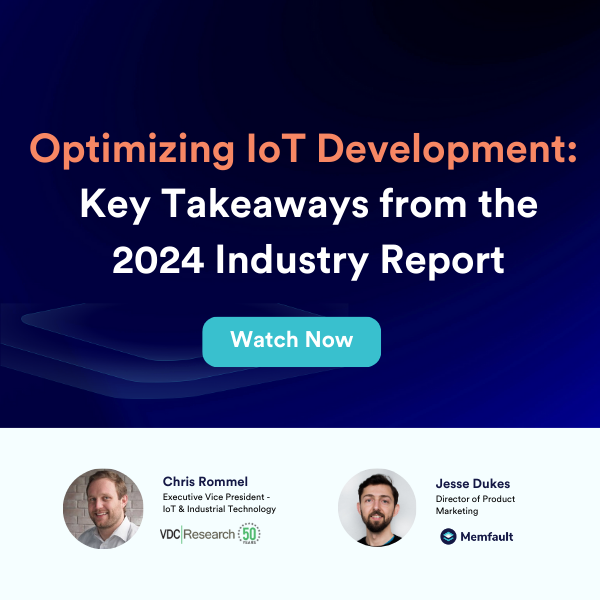New Research
The State of IoT Software Development
A Benchmark for Embedded Teams and Leaders
See how you stack up against hundreds of IoT development projects across a variety of verticals.
This first-of-its-kind benchmark report provides insights on the resources and challenges involved in IoT and embedded device development, as well as the best practices you need to succeed.
Use this IoT software development report to:
- Benchmark your project costs, deadlines, and resources against industry norms.
- Identify the tools and technologies used by the top embedded teams.
- Develop a playbook to launch your IoT product on time and within budget.
- Get executive buy-in on the resources you need to make your IoT project a success.
See Key Findings ↓
EXECUTIVE SUMMARY
What IoT Teams Need to Know
IoT development projects are highly complex, expensive, and time consuming. Combining cost constraints with time-to-market pressures is a potential recipe for poor software quality, which can reduce user productivity, risk cybersecurity vulnerabilities, and yield customer dissatisfaction. Fortunately, your IoT development team can accelerate project timelines and improve in-field maintenance by using a variety of software development tools.
Read Executive Summary
1/3 of IoT teams
do not believe their organization adequately tests the cybersecurity of its IoT products.
50.3%
take more than a week to find IoT software defects in the field—and 19.6% take several months.
Only 8%
meet the industry recommendation to release IoT software fixes within a day of finding defects.
ABOUT THE RESEARCH
See the Inner Workings of Hundreds of IoT Projects
Memfault partnered with VDC Research, a leading IoT research firm, to develop a first-of-its-kind benchmark report that sets a new standard for embedded teams around the world.
For this report, VDC Research conducted an online survey of 783 people personally involved in IoT product development and/or embedded electronic systems. This global survey offers unique insight into leading business and technical trends impacting product development organizations and uncovers the best practices implemented to address them.
Respondents to the IoT product development and embedded systems survey worked in a variety of job roles, including: system architect, software developer, firmware engineer, hardware engineer, product/project manager, and engineering manager/VP. Their employers included OEMs, ODMs, independent product design and software development firms, and systems integrators. They came from companies large and small, across eight industries and 36 different countries.
[maxbutton id=”2″]
See what experts say about the research
Watch the Panel Discussion
Six IoT experts weigh in on the report's findings and discuss the implications.
LEARN MORE
Dive into the Data
VDC Research’s Executive Vice President, Chris Rommel, breaks down the data.
LEARN MORE
Wakeup Call to IoT Developers
Memfault CEO and co-founder François Baldassari shares advice on how to think like a software company.
LEARN MORE